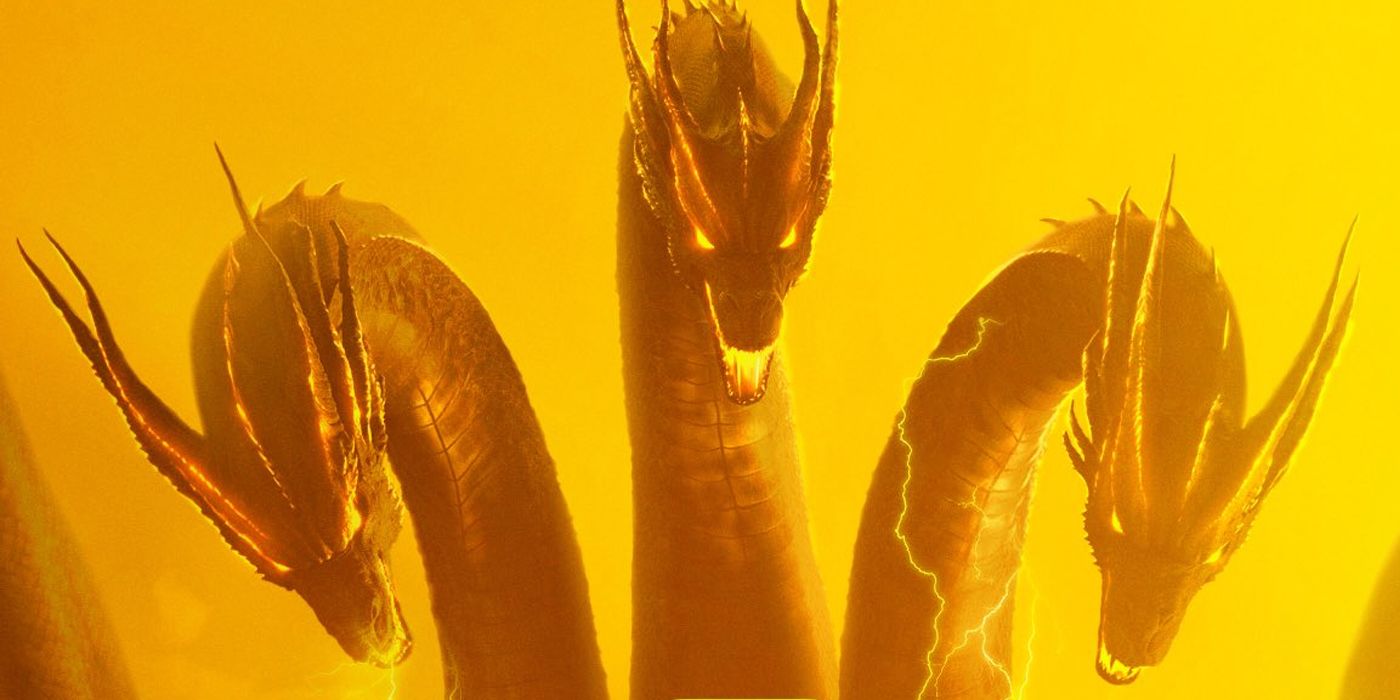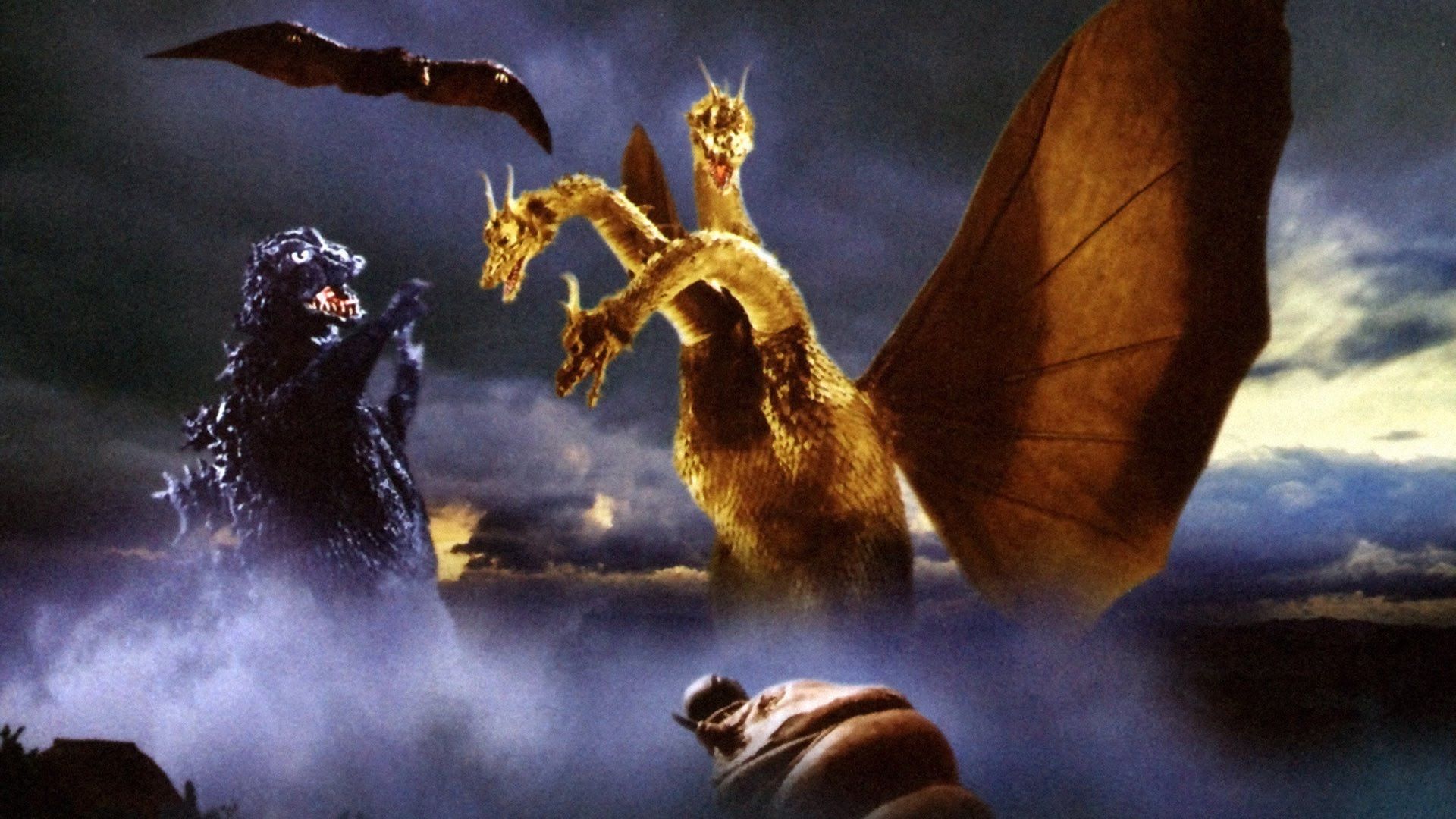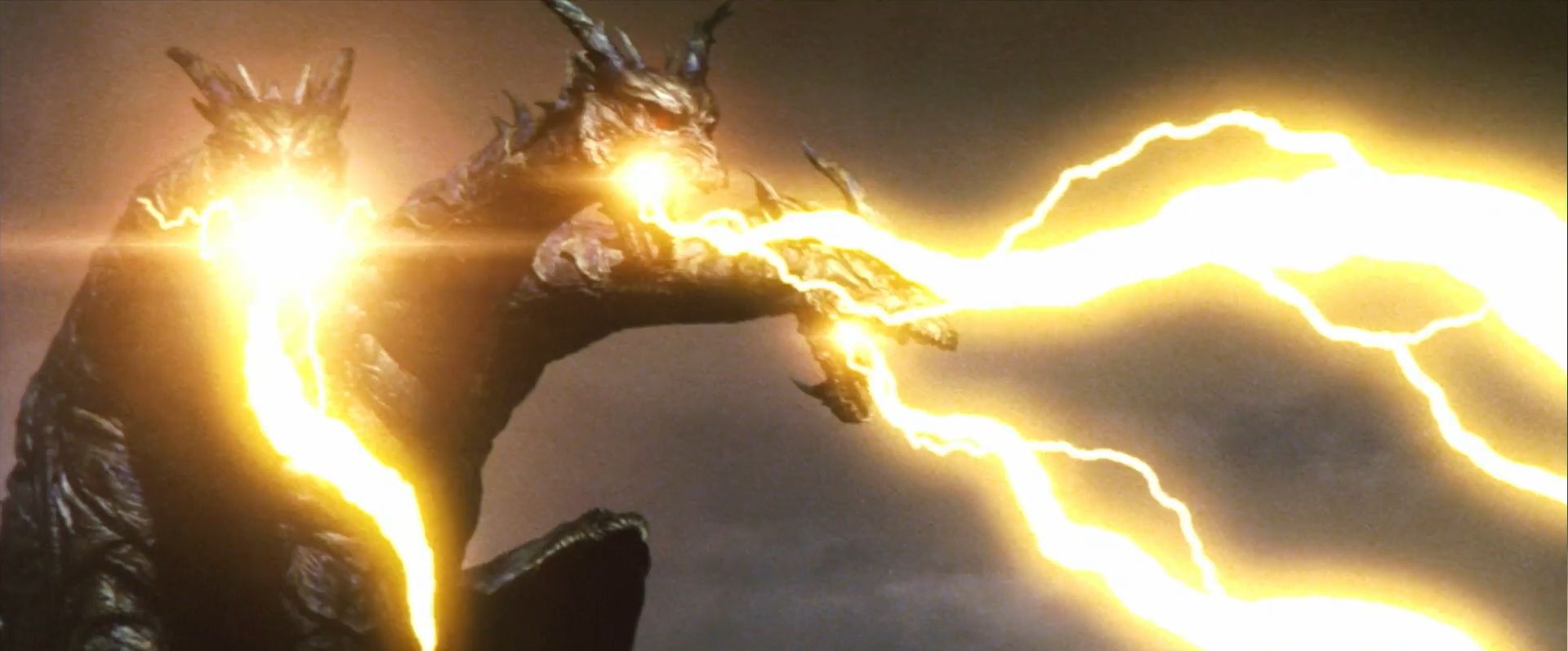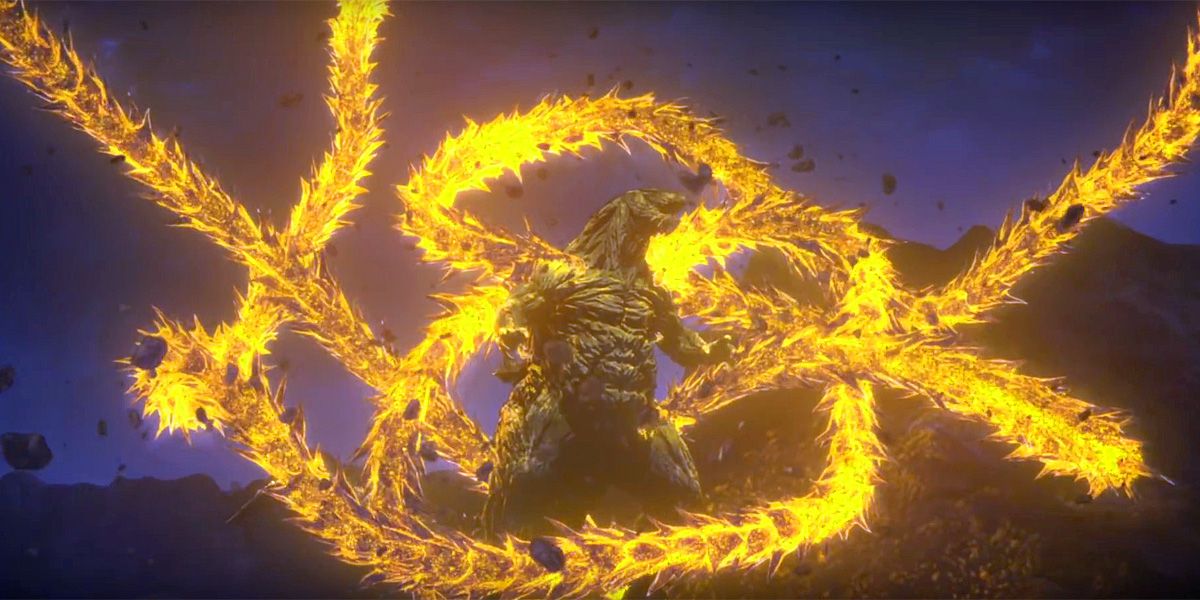WARNING: The following article contains mild spoilers for Godzilla: King of the Monsters, in theaters May 31.
Five years since his last appearance, the MonsterVerse incarnation of Godzilla returns to the big screen in Godzilla: King of the Monsters, along with several other iconic kaiju (sorry, titans)joining him in the battle for monster supremacy. While Rodan and Mothra also make their respective MonsterVerse debuts, the film's primary antagonist is undeniably the fearsome King Ghidorah. First teased in the post-credits scene of Kong: Skull Island, the three-headed, electricity-based dragon has been a long-running nemesis for Godzilla throughout the history of the franchise, and the upcoming sequel teases a battle for the ages between the two.
The destructive behemoth was first introduced in 1964's Ghidorah, the Three-Headed Monster as a threat so powerful that it forces Godzilla, Rodan, and Mothra to put aside their differences and work together to take down the evil titan. Godzilla creator Tomoyuki Tanaka was inspired by the Ancient Greek multi-headed monster the Hydra, reducing the number of heads from eight to three due to practical and budgetary reasons.
The 1964 film's version is revealed to be an ancient extraterrestrial monster that wiped out an advanced civilization on the planet Venus five millennia before the events of the film. Crash-landing on Earth in a meteor, Ghidorah's rampage was stopped by the combined might of Godzilla, Mothra and Rodan. The monster would reappear to challenge Godzilla in three further films during the franchise's inaugural Showa era, occasionally partnering with the other extraterrestrial kaiju Gigan.
In the Hesei era that rebooted the franchise in the 1990s, humanity sends three genetically engineered creatures known as Dorats to a hydrogen bomb testing location in 1954 to change history and destroy Godzilla in its early years. However, due to the radiation, the three creatures merged and became the iconic three-headed dragon. In the face of an assault by Ghidorah, the Japanese government creates a new Godzilla who destroys the monster. Later, a United Nations team organized to stop Godzilla rebuilds Ghidorah by combining the creature's remains with cybernetic parts to form Mecha King Ghidorah.
The short-lived Millennium reboot of the franchise had given Ghidorah an unlikely ally in Mothra. It also changes the creature's motivation, reframing it as one of the Guardian Monsters on Earth instead of the usual extraterrestrial monster. Revived by Mothra to fight Godzilla, Ghidorah's destruction unleashed the Guardian Monster spirit within him and trapped Godzilla back on the ocean floor. Ghidorah would similarly be summoned by humanity in the recent trilogy of anime movies to defeat Godzilla after he has largely driven humanity from the planet. Emerging from three singularities, this version of Ghidorah is comprised primarily from astral energy and only able to be driven back to his dimension after his link Earth's universe is severed.
While Ghidorah's appearance throughout his various iterations has remained relatively consistent, his abilities have varied greatly. Ghidorah is always capable of flight and electricity-based attacks, but, during the Showa era, Ghidorah could fire anti-gravity beams and generate magnetic fields. During the Hesei era, in his cybernetic form, Ghidorah could fire grappling cables that could transmit electricity and were strong enough to carry Godzilla.
The most drastic change to Ghidorah is in his anime appearance. With power over time and space itself, the animated Ghidorah can extend and retract his heads to near-infinite lengths, and is so powerful, his mere presence has a warping effect on the very fabric of space-time. In addition to being able to go intangible, this Ghidorah is virtually invisible to most tracking devices, detected only by his immense gravitational energy. Nearly erasing Godzilla from existence, the creature is banished back to his native dimension, apparently unable to be truly destroyed.
According to what Legendary has released so far, we know Godzilla: King of the Monsters has the top secret kaiju-investigating organization Monarch give Ghidorah the codename Monster Zero, reflecting the creature's original American name. The monster is frozen deep below the ice in Antarctica, where a Monarch facility has been constructed to constantly oversee it. The creature is reportedly over 500 feet tall (bigger than Godzilla), with each head capable of independent thought. In addition to its use powers of flight and electricity-based attacks, Ghidorah's entire body can pulsate with electricity as a defense mechanism and actually generate powerful thunderstorms around it which is especially apparent as it flies through the stratosphere. Using its increased wingspan, the MonsterVerse incarnation of Ghidorah can generate hurricane-force gusts of wind both flying and while standing still, leaving a trail of destruction in his wake.
No matter what continuity it terrorizes, King Ghidorah has always been one of the most formidable kaiju that Godzilla has ever faced. While its powers and abilities have varied over the years since its initial introduction in 1964, its control over electricity and three ravenous heads make it particularly lethal, and its MonsterVerse incarnation appears to be one of the deadliest versions yet. Godzilla will have to rely on new allies if he hopes to retain his title as King of the Monsters.
Directed by Michael Dougherty, Godzilla: King of the Monsters stars Vera Farmiga, Ken Watanabe, Sally Hawkins, Kyle Chandler, Millie Bobby Brown, Bradley Whitford, Thomas Middleditch, Charles Dance, O’Shea Jackson Jr., Aisha Hinds and Zhang Ziyi. The film opens May 31.




